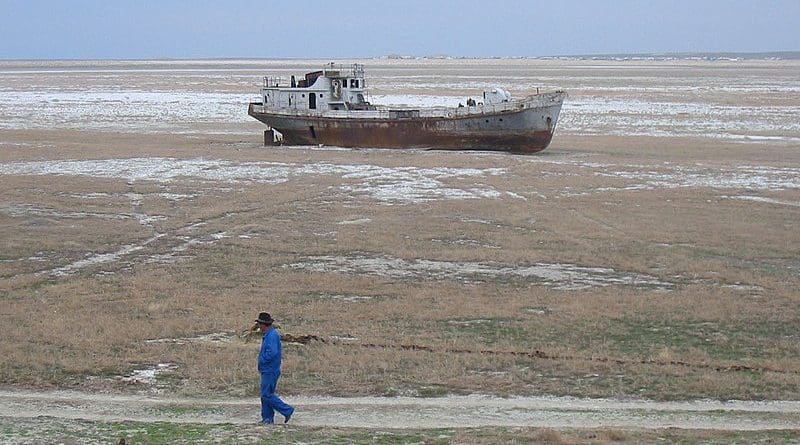How Is Climate Change Affecting Central Asia? – OpEd
By RFE RL
By Bermet Talant
(RFE/RL) — Water is arguably the most important resource in Central Asia. It is vital for agriculture, which feeds and provides livelihoods for the region’s predominantly rural population, as well as for hydropower stations that generate electricity for domestic consumption and export.
But this resource is at risk.
According to the 2019 report by the Intergovernmental Panel on Climate Change, temperatures in Central Asia are rising faster than the global average. Scientists predict that the region will become dryer, and more parts of it will turn into deserts. Glaciers are melting at unprecedented speed. The World Bank report published last September estimated that Central Asia could see as many as 5 million internal climate migrants by 2050.
Over the past five years, Central Asian countries have already seen some of the worst droughts, which has led to shortages of water for irrigation and hydropower. This, in turn, has pushed prices for food up and caused electricity shortages. And in 2021, the deadliest border conflict between Kyrgyzstan and Tajikistan in years started as a water dispute between local residents, although other factors played a role too.
In a live discussion on June 30, I spoke with Shahzoda Alikhanova, a natural resources management specialist from Uzbekistan who is currently a doctoral researcher at the Durrell Institute of Conservation Ecology at the University of Kent, and Sher Khashimov, a journalist from Tajikistan, about the impact of these environmental shifts on local communities, adaptation for a hotter and dryer future, and a lack of local scientific research and policy on grappling with climate change.
Some key takeaways:
Shahzoda Alikhanova (Uzbekistan): “I would say that the biggest threat not only to Uzbekistan but across Central Asia is water shortages. Uzbekistan is a downstream country, and we are highly dependent on water resources and we don’t generate our water. But water is crucial for agricultural production. I would say that farmers will be the most vulnerable, and they would be those who suffer the most because of the increasing droughts. There are different reports saying that crop yields across Central Asia are expected to decrease by 30-40 percent by mid-century. As precipitation patterns change, landslides and mudslides mostly occur in mountainous areas while droughts affect lowlands.”
Sher Khashimov (Tajikistan): “For the most part, I don’t think people in Tajikistan understand how climate change is going to impact electricity production. Part of it has to do not only with the lack of knowledge but also with a lack of transparency on the part of the government. Usually, when the country’s energy systems face water shortages, and they are forced to shut down electricity access to certain communities in Tajikistan, the government just tells people that these are system maintenance days and they should gain access to electricity back in a few hours, maybe, a few days. But the government never acknowledges the larger systemic issues behind electricity shortages, which prevents people from understanding how it’s all connected to melting glaciers and climate change.”
- Bermet Talant is a journalist from Kyrgyzstan who is currently based in Sydney. She previously worked as a political reporter for the Kyiv Post and completed a Reuters Institute fellowship at Oxford University. She has also written for The Guardian, the Lowy Institute, Eurasianet, openDemocracy, and the Organized Crime and Corruption Reporting Project.

